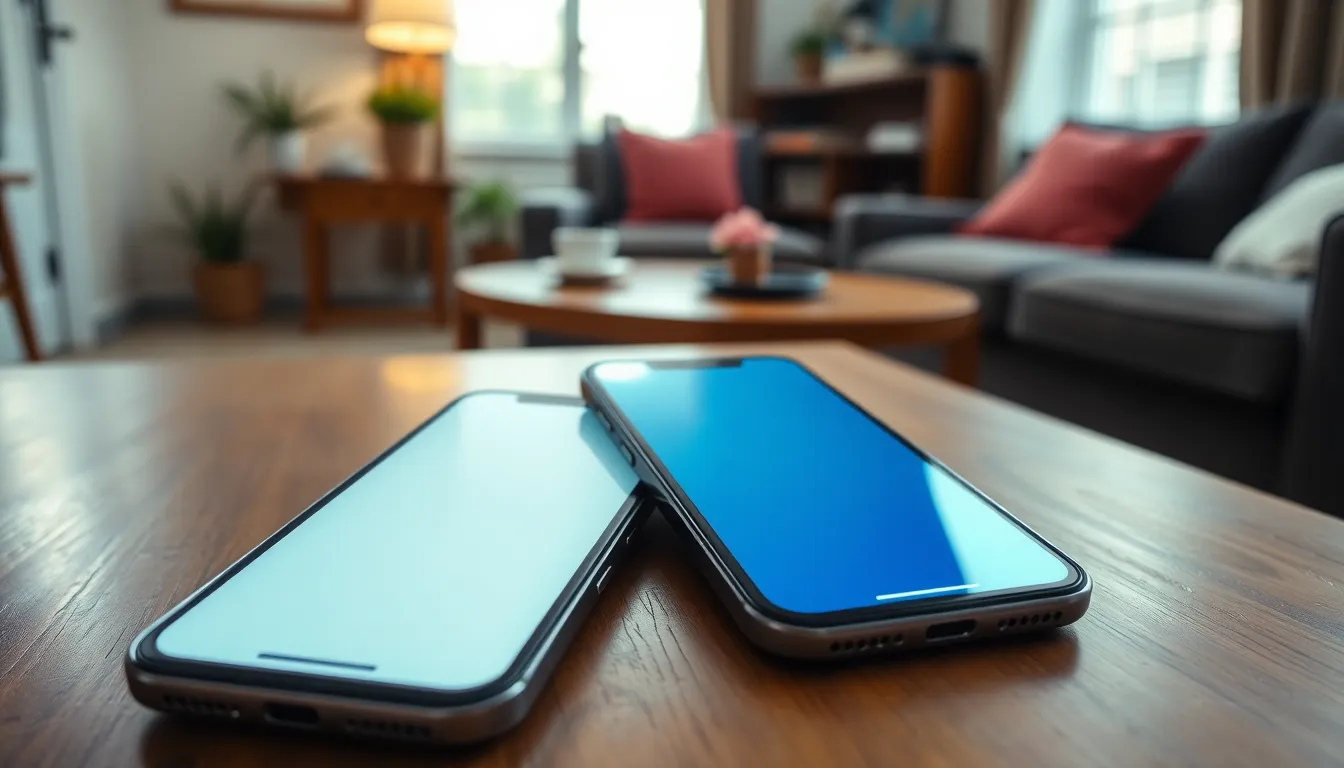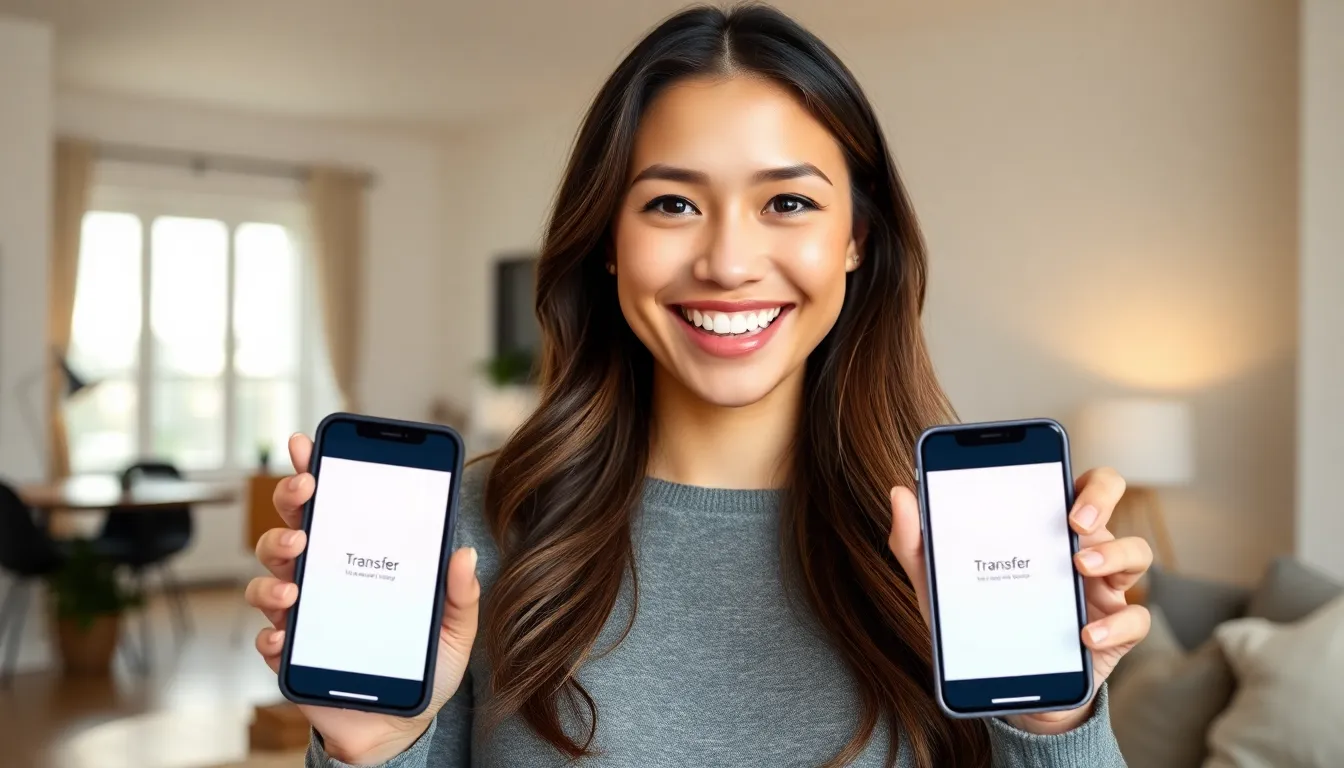Table of Contents
ToggleTransferring from one iPhone to another can feel like moving to a new house—exciting yet daunting. Just when you think you’ve got everything packed up nicely, you realize you’ve forgotten your favorite coffee mug. But fear not! With a little guidance, the process can be smoother than your favorite playlist.
Understanding The Transfer Process
Transferring data from one iPhone to another can seem daunting. Understanding the steps involved can make the transition smooth and efficient.
What To Know Before You Start
Back up data on the old device. Doing so ensures all important information is stored safely. Familiarize yourself with the transfer methods available, such as Quick Start or iCloud. Each method has its unique benefits based on user preference. Recognize that certain data types may not transfer, such as some app-specific settings. Knowing this helps in preparing for any adjustments after the transfer. Plan for enough time during the migration process; larger data sets take longer to move.
Preparing Your Devices
Ensure both iPhones are fully charged. Connecting both devices to a power source prevents interruptions during the transfer. Update to the latest version of iOS on both devices for compatibility. Disconnect from Wi-Fi on the old phone but maintain it on the new device if using Quick Start. This setting enhances the speed of the transfer. Disable any security features, such as Find My iPhone, which might impede the transfer process. Taking these steps sets the stage for a successful migration experience.
Methods For Transferring Data

Transferring data between iPhones offers various efficient methods. Each option suits different preferences and needs.
Using Quick Start
Quick Start facilitates a seamless transfer. By placing both devices close together, users can begin the process easily. They must confirm their Apple ID and follow on-screen prompts. This method transfers settings, app arrangements, and most data types. Keep in mind that both devices require iOS 11 or later for compatibility.
iCloud Transfer
iCloud Transfer provides a cloud-based solution for data migration. Users must first back up their old iPhone to iCloud, ensuring sufficient storage space is available. Once backed up, they can restore the iCloud backup on the new iPhone during the setup process. This method works well for transferring contacts, photos, and app data but requires a stable Wi-Fi connection and adequate iCloud storage.
Using iTunes
Using iTunes remains a popular choice for data transfer. Connecting the old iPhone to a computer with iTunes installed allows users to create a full backup. After backing up data, they can connect the new iPhone and restore the backup through iTunes. This method supports transferring media files, contacts, and settings. Ensure the latest version of iTunes is installed for a smooth experience.
Common Issues & Troubleshooting
Transferring data from one iPhone to another may present challenges. Troubleshooting solutions exist for these common issues.
Problems During Transfer
Connection interruptions can disrupt the data transfer, causing incomplete migrations. Inadequate battery life might halt the process unexpectedly. Sometimes, users encounter compatibility issues if the old iPhone runs an outdated iOS version. Error messages frequently pop up, indicating problems with Apple ID verification. Additionally, insufficient storage on the new device can prevent certain data types from transferring, like photos or apps.
How To Fix Transfer Errors
Restarting both iPhones often resolves many transfer problems. Checking for the latest iOS updates ensures compatibility and smooth functionality. Users should verify their Apple ID credentials, correcting any mistakes during input. Ensuring both devices are on a stable Wi-Fi connection aids in preventing interruptions. For those using Quick Start, keeping the devices close together, within a few inches, enhances the connection. Finally, freeing up storage on the new iPhone allows for a full data transmission without missing files.
Tips For A Smooth Transition
Preparing for a data transfer between iPhones requires careful planning. Read on to discover essential tips that enhance the process.
Backing Up Your Data
Backing up data ensures nothing gets lost during the transfer. Users can perform a backup using iCloud by navigating to Settings, tapping on their name, selecting iCloud, and then choosing iCloud Backup. A Wi-Fi connection is necessary to complete this process. Alternatively, using iTunes provides another reliable option. Connecting the old iPhone to a computer allows users to create a full backup by selecting “Back Up Now” in iTunes. Regular backups are crucial, ensuring up-to-date copies of important files and settings remain accessible before transitioning to a new iPhone.
Ensuring Connectivity
Establishing a stable connectivity is vital during the transfer. For Quick Start, devices must be within proximity to maintain a strong Bluetooth connection. Wi-Fi plays an important role, particularly when using iCloud for backups and restoring data. Before starting, users should verify their Wi-Fi is functioning smoothly. Should issues arise, restarting the router or switching to another network may help stabilize the connection. Keeping both iPhones charged throughout the process prevents interruptions, ensuring a seamless transfer experience.
Transferring data from one iPhone to another can be a smooth and rewarding experience when approached with the right preparation. By understanding the various methods available and taking the necessary steps to back up data, users can minimize challenges during the transition. Ensuring both devices are charged and updated enhances the likelihood of a successful transfer.
With the right guidance and patience, the excitement of setting up a new iPhone can outweigh any potential hurdles. Embracing the process not only leads to a new device but also a fresh start filled with possibilities.




